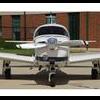Ray Jay Turbo Question
-
Members Online
- Danb
- Scott H
- BrentS
- Schllc
- MattD89
- PeterRus
- shawn-201zb
- kortopates
- Hank
- ArtVandelay
- Jay Bird
- LD5757
- ArnieTX
- dkkim73
- DXB
- ProtoFly
- slowflyin
- RoundTwo
- buddy
- Deb
- Oliver
- LANCECASPER
- Austintatious
- MaxwellSmart86
- Stan
- tankles
- Justin Schmidt
- KSMooniac
- wolfbyte
- ftresdtrswhes45
- phrogpilot73
- Paul Thomas
- bcg
- N.Nelson
- philiplane
- toto
- redbaron1982
- Kevin Westbrook
- Gilt
- TX-Champ
- Rmnpilot
- Grumpy
- Will.iam
- alextstone
- FlyingDude
- KLRDMD
- Jerry 5TJ
- Sue Bon
- hammdo
- corn_flake
- kris_adams
- Adverseyaw0317
- hobbit64
- Skates97


Recommended Posts
Join the conversation
You can post now and register later. If you have an account, sign in now to post with your account.